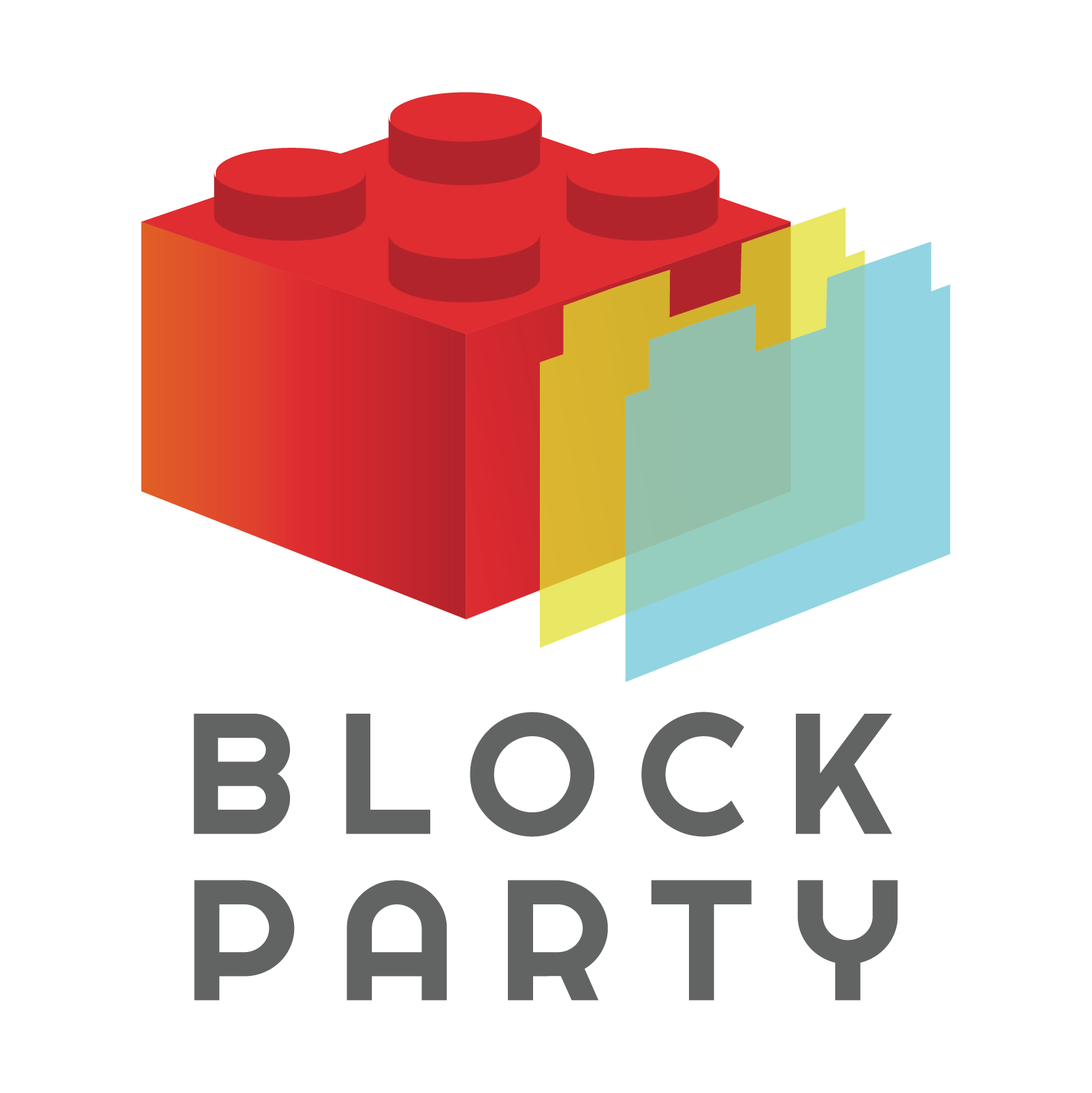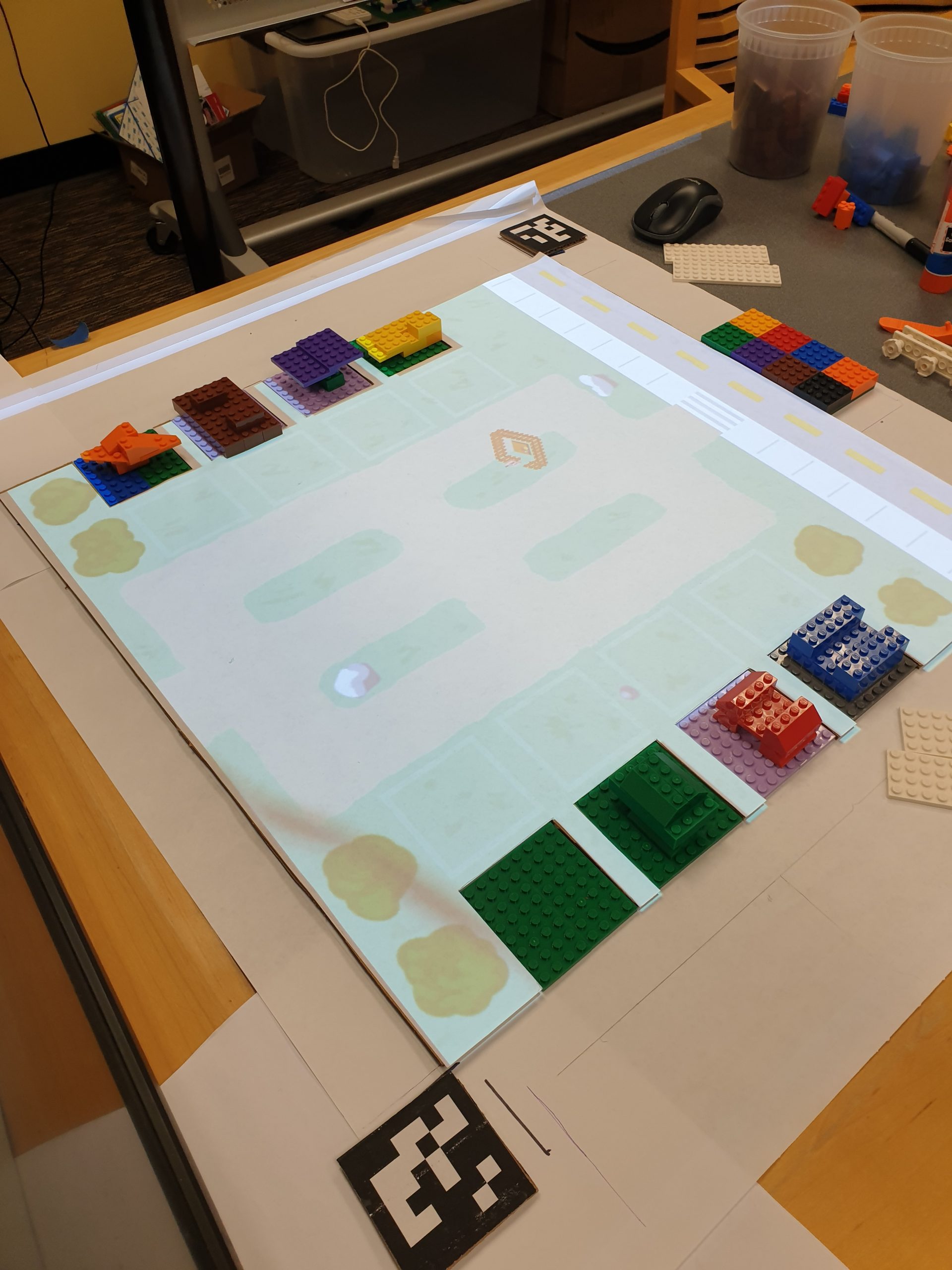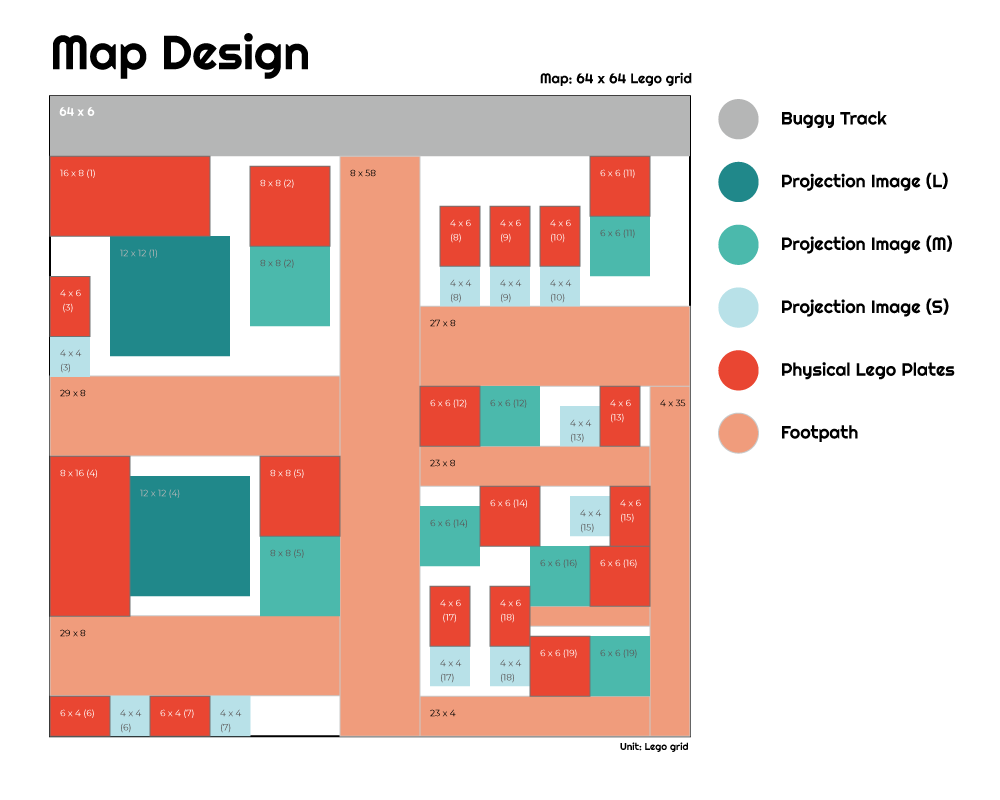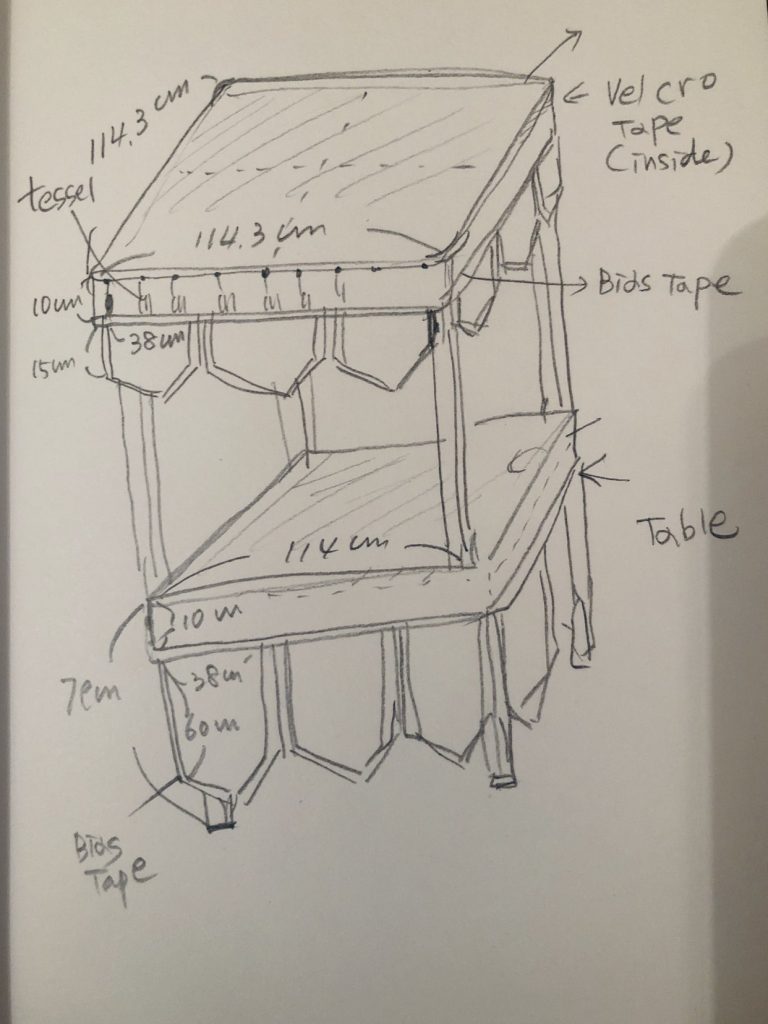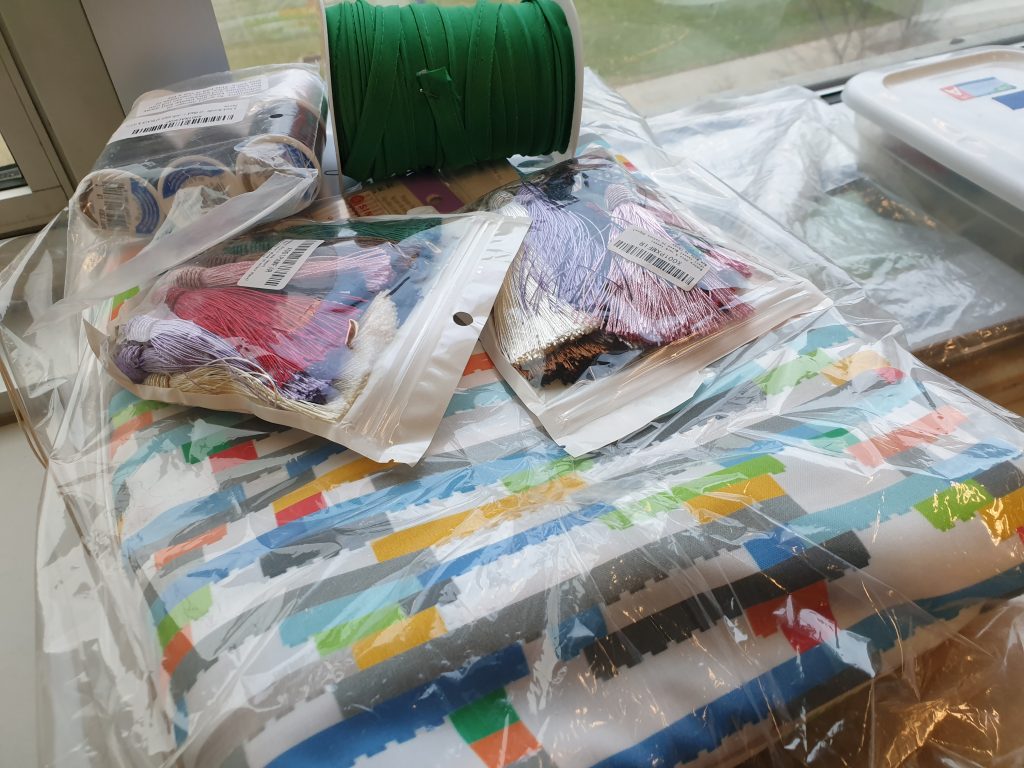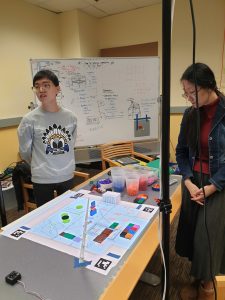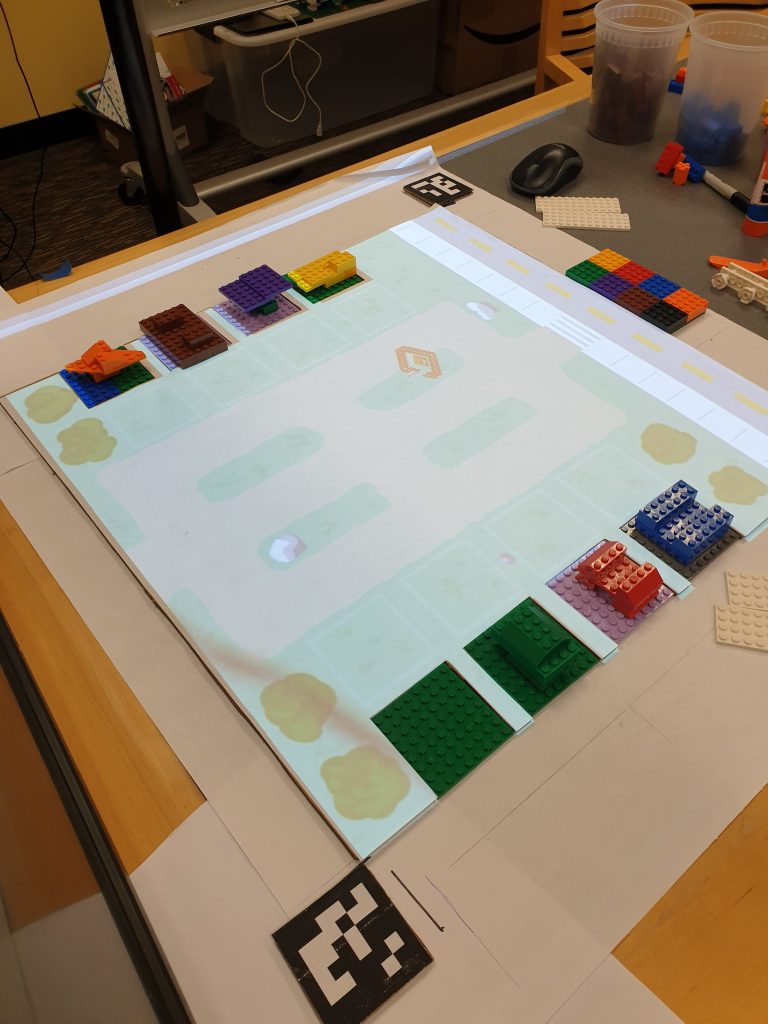
This week we reviewed the playtest results from last Thursday and Friday to determine how the experience design should change to reflect our design goals. We noticed that a map of CMU to give context to the ‘canvas’ helped a lot to instigate initial LEGO building by providing a visual cue for what kinds of things players should try to build. Through testing the background/terrain map of the experience, we noted that having zones or lines on the table helped to orient the LEGO pieces in a way that did not conflict with our virtual mapping (as perpendicularly arranged LEGO pieces were better represented than diagonally arranged pieces). But because the surface was completely flat, the experience felt free form and so some issues like space management of the virtual tents and assets arose. We decided on a zone solution, and created a map loosely based on the CMU Main Campus (from the Hunt Library all the way to Forbes Avenue), and are trying out affixing smaller base boards to help give people an initial hint of how to interact with our surface. We want to retain the free-form effect of affecting the direction of the characters as well, but provide indirect control so that the initial touchpoints with our experience are the most optimal types.
Art Progress
Aside from churning out a whole slew of new and different varieties of booths that can be generated based on what the player constructs, our artists also created a color scheme that we can use when we generate certain items based on a color. For example, a mostly red structure might create a red colored game booth. This color scheme helps unify the look of the overall map when different players are constructing.
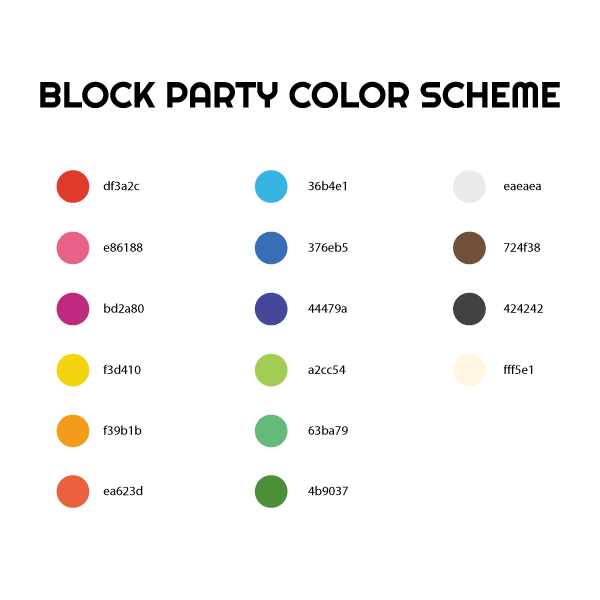
Additionally, our other artist has been hard at work designing the fabric for the table! Here’s her detailed sketch and a picture of the bought materials.
Tech Progress
We finally have object detection! After it was completed, we reworked the original system to the new map, where we have specific types of zones generating a particular kind of object – for example, a food zone would only generate food or drink booths, whereas an entertainment zone might generate a game booth or a ride like a Ferris wheel!
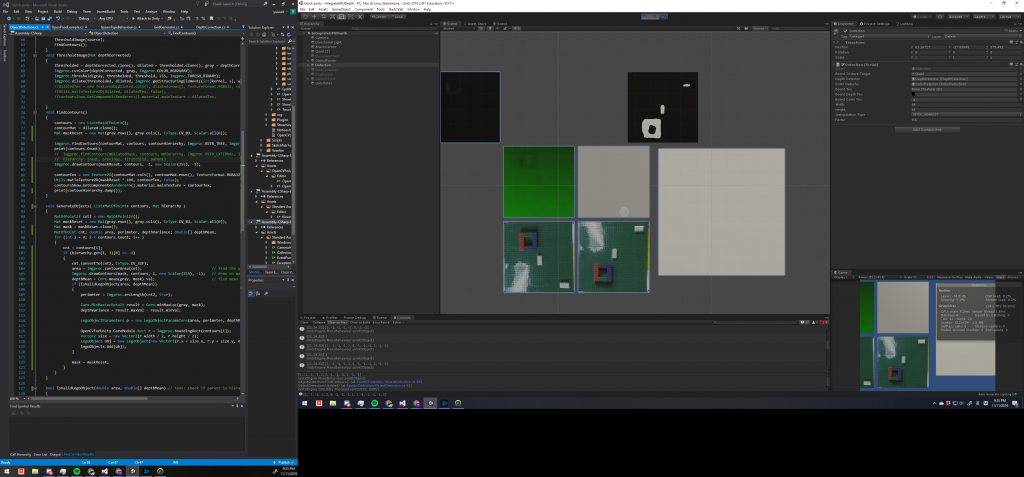
Next, to account for the depth and to make the story clearer, we added a screen where students would move out from Hunt library onto the 2D world to have fun. Here’s a video showing everything we’ve completed this week!
